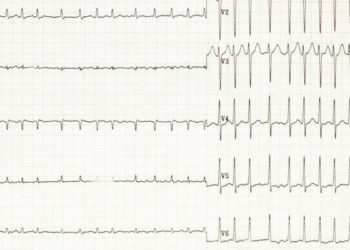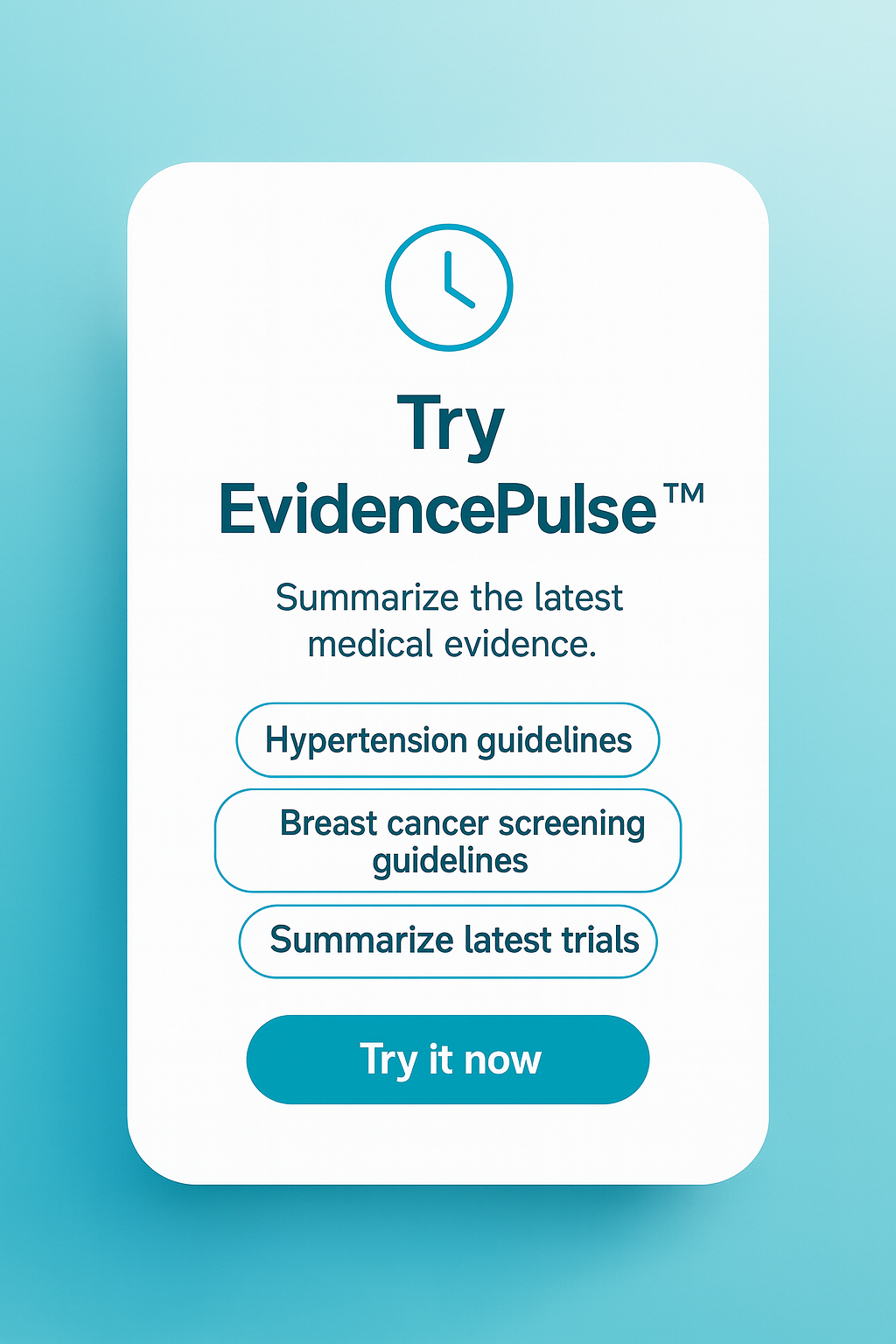2 Minute Medicine Rewind April 6, 2020
1. Patients receiving landiolol were more likely to achieve target heart rates of 60-94 following sepsis-related tachyarrhythmia and had significantly reduced incidence of new onset arrhythmia
Evidence Rating: 1 (Excellent)
Sepsis associated tachyarrhythmias and atrial fibrillation are significant causes of mortality, with as many as a third of patients reaching fatal outcomes. In the context of sepsis, treatments traditionally used for tachyarrhythmias are often ineffective or contraindicated, leading to a small selection of effective treatment strategies. Past studies have shown landiolol, an ultra-short-acting β1-blocker to be an effective rate control agent in the context of sepsis-related tachyarrhythmias, but no randomized controlled trials have been completed to further investigate its efficacy and safety. In this multicenter, open-label randomized controlled trial, 151 patients admitted to 54 different hospitals in Japan between 2018 to 2019 were recruited to address this knowledge gap. Patients included were 20 years of age or older, had been diagnosed with sepsis according to Third International Consensus Definitions for Sepsis and Septic Shock, and had developed either sinus tachycardia, atrial fibrillation, or atrial flutter without a change in catecholamine dose. Seventy-five patients were randomized to the standard therapy group (including respiratory and fluid resuscitation, antimicrobials, and catecholamines), and 76 to the treatment group, consisting of standard therapy and landiolol hydrochloride infusion at 1 μg/kg per min within 2h after randomization, with an option to increase the dose per study protocol to a maximum of 20 μg/kg per min. Compared to the control group, the group receiving landiolol had a significantly greater proportion of patients achieving target heart rate (60-94BPM) at 24 hours post randomization (55% versus 33%, between-group difference, 23.1%, 95% CI 7.1-37.5; p=.0031), with effects maintained until the end of the 96 hour treatment period. New-onset arrhythmia over 168 hours post randomization was also lower in the landiolol group that controls. landiolol appeared to be well tolerated in the treatment group, though few patients were reported to experience hypotension (4%), cardiac arrest (1%), bradycardia (1%), and reduction in ejection fraction (1%). This study represents the first randomized controlled trial investigating landiolol for sepsis-related tachyarrhythmias, and evidence seems to support prior literature that it is an effective rate control agent.
Association of Preeclampsia in Term Births With Neurodevelopmental Disorders in Offspring
1. Maternal preeclampsia at term was associated with an increased risk of neurodevelopmental disorders in offspring.
Evidence Rating: 1 (Excellent)
While the risks associated with preeclampsia are well established for the mother, the associated outcomes and risks for the offspring are relatively less well characterized. Preeclampsia has previously been linked to cerebral palsy, autism spectrum disorder (ASD), and attention-deficit/hyperactivity disorder (ADHD) in offspring, but few studies have distinguished between term and preterm preeclampsia. In this prospective cohort study, researchers investigated the association between maternal preeclampsia in term births with a variety of neurodevelopmental disorders in a cohort of 980,560 Norwegian offspring born at term between 1991 and 2009. Among the children included in the study, 28,068 (2.9%) were exposed to preeclampsia in utero, with 273 cases progressing to eclampsia. During a mean follow up period of 14.0 (SD 5.6) years, offspring exposed to preeclampsia prior to birth were found to have a higher risk of ADHD (adjusted OR, 1.18; 95% CI, 1.05-1.330, ASD (adjusted OR, 1.29; 95% CI, 1.08-1.54), epilepsy (adjusted OR, 1.50; 95% CI, 1.16-1.93), and intellectual disability (adjusted OR, 1.50; 95% CI, 1.13-1.97), with a trend toward a higher risk of cerebral palsy (adjusted OR, 1.30; 95% CI, 0.94-1.80). Analyses were made with adjustment for sex, year of birth, maternal age, parity, and other potentially confounding factors. Although these outcomes were still rare among the cohort, this study represents the most comprehensive investigation evaluating the association between maternal preeclampsia and neurodevelopment to date, and provides evidence that preeclampsia may have broad effects on neurodevelopment independent of preterm birth. Further investigation of this association may provide a basis for screening or intervention in the future for the benefit of offspring born under these conditions.
1. In patients with different types of morphea unresponsive to phototherapy and methotrexate, mycophenolate appears to be a safe and beneficial treatment option.
Evidence Rating: 2 (Good)
Morphea, otherwise known as localized scleroderma, is a rare sclerosing disorder of the skin affecting patients of all ages. Currently, first-line systemic therapy typically involves methotrexate with or without systemic corticosteroids when phototherapy is ineffective. Escalation of therapy for patients unresponsive to methotrexate is mycophenolate, but this recommendation is based primarily on extrapolation of literature from studies on systemic sclerosis, as there are limited studies actually investigating the efficacy of mycophenolate for morphea. In this multicenter retrospective cohort study, data from 77 patients obtained between 1999 to 2018 was analyzed to investigate mycophenolate use for morphea. The primary outcomes were morphea disease activity, severity, and response at 0, 3 to 6, and 9 to 12 months post treatment. Sixty-one female patients and 16 male patients were included in the study, with median age at disease onset being 36 years. Generalized morphea (48% of cases), pansclerotic morphea (16%), linear morphea of the trunk and/or extremities (12%) were the most common subtypes identified, with most patients having moderate to severe disease severity. Mycophenolate appeared to be an effective treatment, with 66 of 73 patients achieving stable (n=22) or improved (n=44) condition at 3 to 6 months, and 47 of 54 patients with stable (n=14) or improved (n=33) condition at 9 to 12 months, and 27 patients achieving disease remission at study completion. Thirty-four (44%) of patients experienced an adverse event during treatment, with the most common being GI distress. This study represents the largest study to date evaluating the efficacy and safety of mycophenolate for morphea, and appears to support current recommendations for the drug to be a beneficial and largely safe agent for administration in patients unresponsive to phototherapy and methotrexate.
1. Exposure to higher levels of air pollutants was associated with increased dementia incidence, with the 5 years preceding onset being the most impactful.
2. Association between dementia and air pollutant exposure was amplified in patients with cardiovascular disease, specifically heart failure and ischemic heart disease.
Evidence Rating: 2 (Good)
With increasing rates of dementia and no curative treatment being available, identification of risk factors and possible preventative measures continues to be a priority in addressing the issue. A ir pollution has recently been identified as risk factor for the development of dementia. Currently, the role of cardiovascular disease (CVD) in this association is unknown. In this retrospective cohort study, researchers analyzed the data of 2977 participants from the ongoing Swedish National Study on Aging and Care in Kungsholmen (SNAC-K) to address this knowledge gap, hypothesizing that CVD may mediate and strengthen the association between air pollution and dementia incidence. Patients were recruited between 2001 to 2004, with follow-up up to 2013. Particulate matter and nitrogen oxide were identified as the two major air pollutants with yearly assessment, and dementia and CVD (including atrial fibrillation, ischemic heart disease, stroke, heart failure) were identified as main outcomes. Mean age of participants was 74.1 years, and 364 incident cases of dementia were identified during follow up, 72.3% of which were women. A higher hazard of dementia was found per interquartile range (IQR) difference of particulate matter ≤2.5 μm (PM2.5) (HR, 1.54; 95% CI, 1.33-1.78; IQR difference, 0.88 μg/m3) and nitrogen oxide (NOx) (HR, 1.14; 95% CI, 1.01-1.29; IQR difference, 8.35 μg/m3) concentrations during the 5 years preceding onset, though no association was found during the 6 to 11 years before the event. Interestingly, higher risk of dementia were associated with exposure to PM2.5 and NOx in persons with heart failure (interaction HR, 1.38 [95% CI, 1.06-1.81] and 1.35 [95% CI, 1.05-1.72], respectively) and ischemic heart disease (interaction HR, 1.13 [95% CI, 0.90-1.48] and 1.22 [95% CI, 0.95-1.60], respectively), but not for strokes and atrial fibrillation. Instead, stroke appeared to be the primary intermediate condition, accounting for 49.4% of air pollution-related dementia cases. In terms of study implications, these findings suggest reduction of air pollution as a potential means to reduce future dementia incidence, and reemphasizes the importance of optimal CVD management and prevention.
Association Between Breastfeeding and Ovarian Cancer Risk
1. Breastfeeding was found to be significantly associated with decrease risk of invasive ovarian cancer, including high-grade serous and endometroid cancer.
Evidence Rating: 2 (Good)
Ovarian cancer is a significant contributor to female mortality, with 5-year survival following diagnosis being less than 50%. Prevention is critical for reducing disease mortality, but currently, few modifiable risk factors beyond oral contraceptive use have been identified. Breast feeding has been reported as a potential modifiable risk factor, with some studies finding a negative association between breast feeding and epithelial ovarian cancer development. The relationship between the two is not well characterized however, as prior studies often had insufficient sample sizes. In this pooled analysis, data of 9973 women with ovarian cancer and 13 843 controls from the Ovarian Cancer Association Consortium was included to further investigate this association. Data was collected between 1989 and 2009, with exposures of interest including duration of breastfeeding, age at first and last breastfeeding, and years since last breastfeeding for example. A history of breastfeeding was associated with an overall 24% lower risk of invasive ovarian cancer (odds ratio [OR], 0.76; 95% CI, 0.71-0.80), and 28% reduction of borderline tumor risk, and was independent of parity. Among invasive diseases, researchers observed statistically significant associations for high-grade serous (OR, 0.75; 95% CI, 0.70-0.81), endometrioid (OR, 0.73; 95% CI, 0.64-0.84), and clear cell tumors (OR, 0.78; 95% CI, 0.64-0.96). The protective effect was more pronounced with greater duration of breastfeeding (18% risk reduction for 1 to 3 months, 34% reduction for 12 months or greater), and reduction of cancer risk persisted for decades, with significantly lower risk even 30 years later. This study represents the largest study investigating breastfeeding and ovarian cancer risk, providing strong evidence for breastfeeding as a potentially modifiable risk factor for cancer development. Future research to better characterize the biological mechanisms underlying risk reduction are encouraged to potentially reveal further therapeutic targets or screening measures related to ovarian cancer.
Image: PD
©2020 2 Minute Medicine, Inc. All rights reserved. No works may be reproduced without expressed written consent from 2 Minute Medicine, Inc. Inquire about licensing here. No article should be construed as medical advice and is not intended as such by the authors or by 2 Minute Medicine, Inc.









